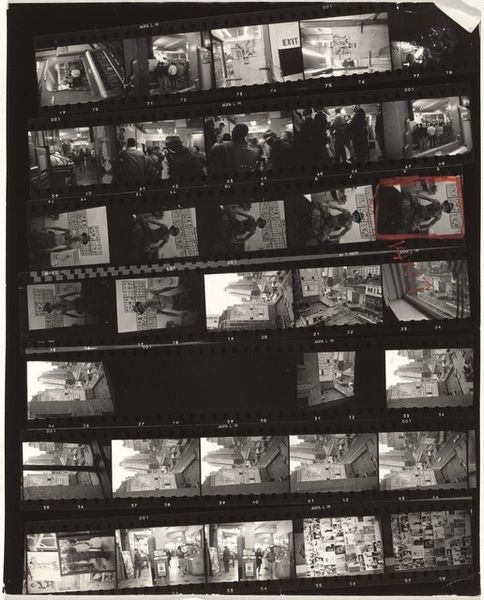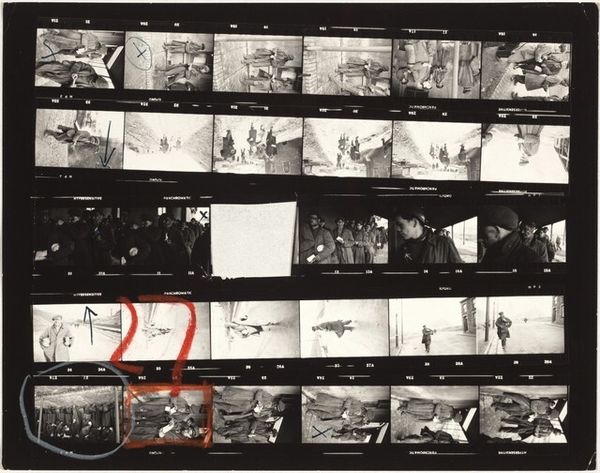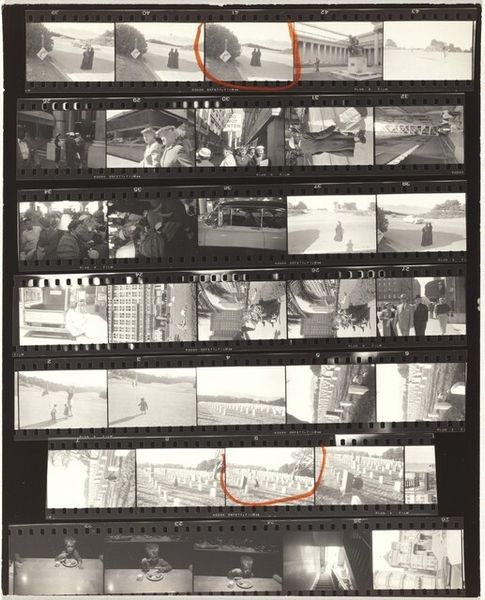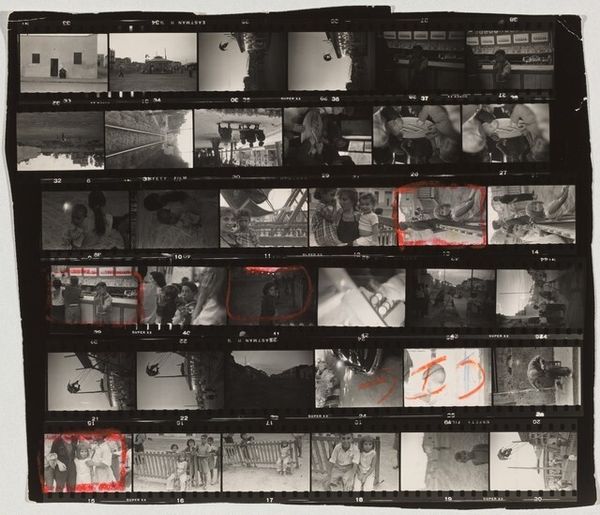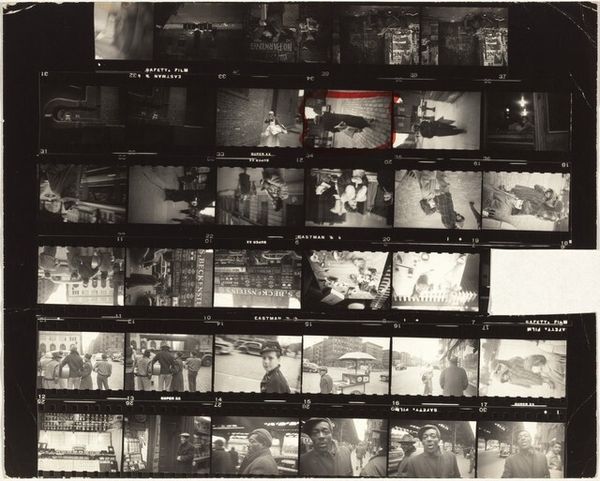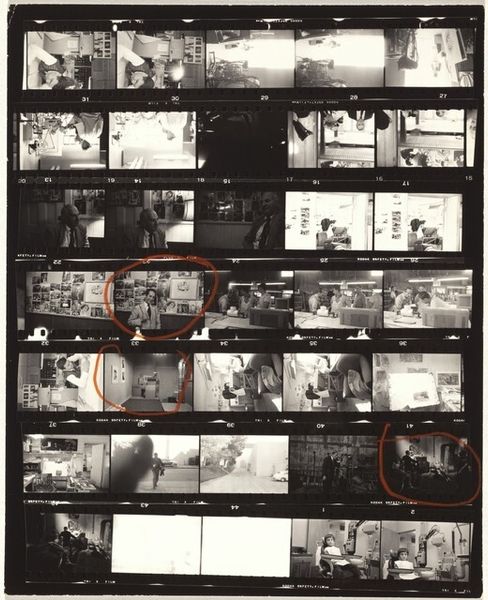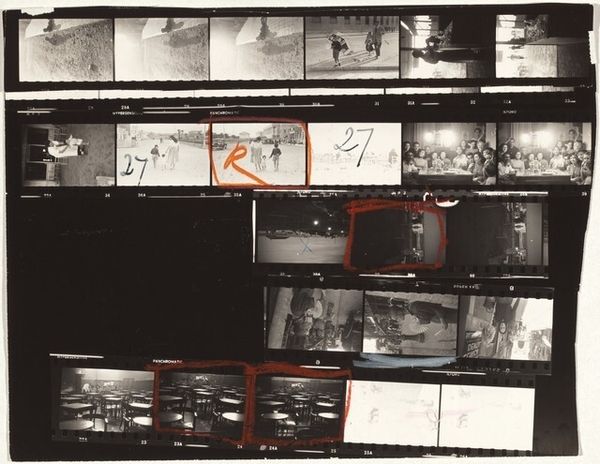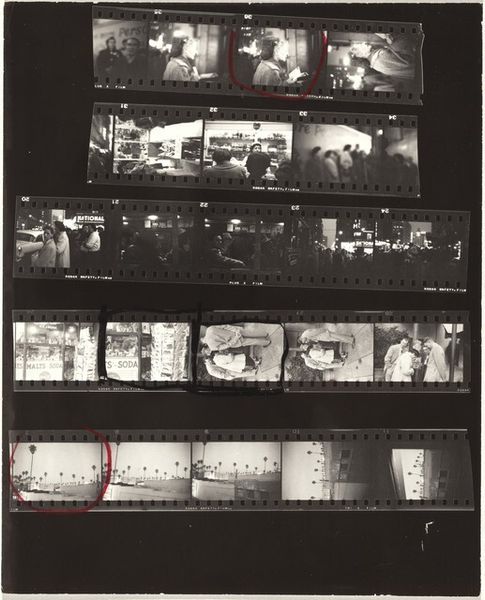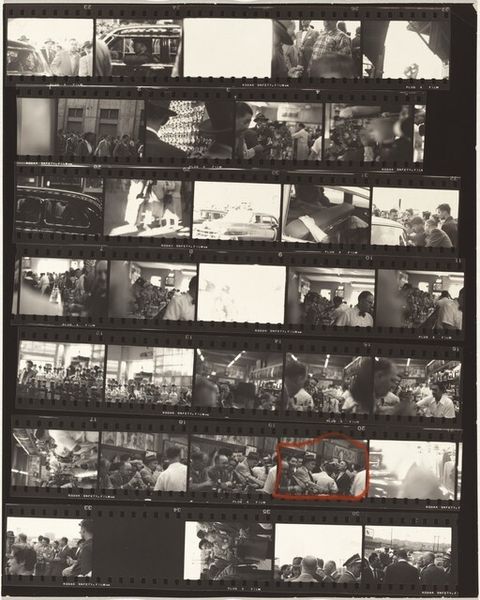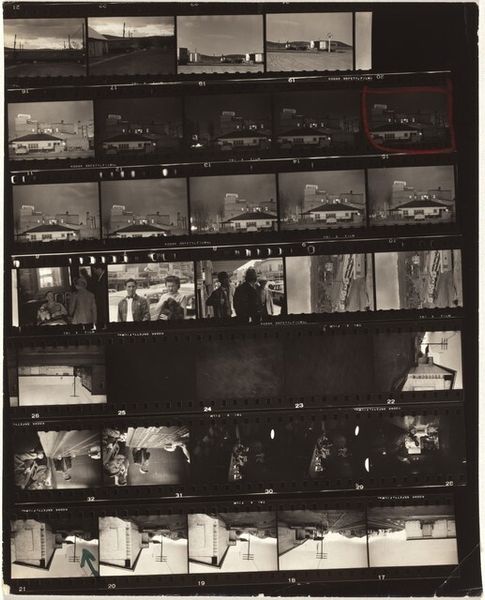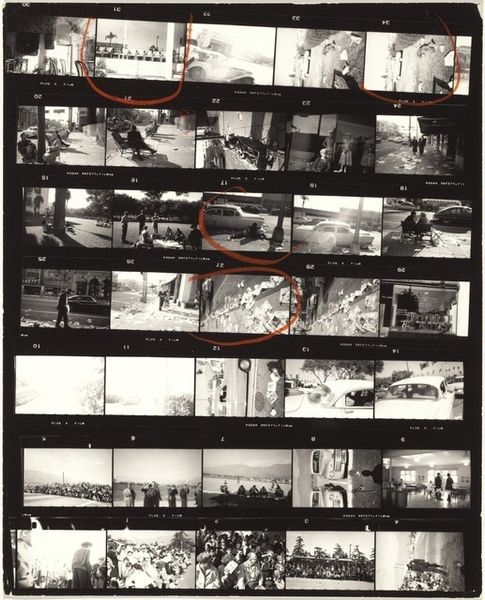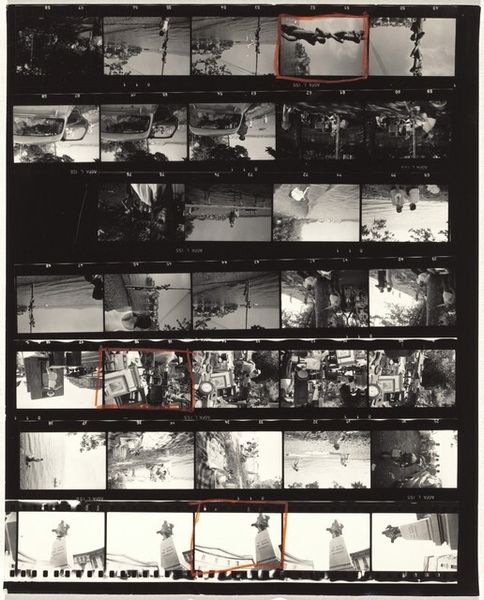
Dimensions: overall: 21.9 x 23.3 cm (8 5/8 x 9 3/16 in.)
Copyright: National Gallery of Art: CC0 1.0
Editor: We're looking at Robert Frank's "Valencia, Spain 9" from 1952, a gelatin-silver print showing a contact sheet of various scenes. The whole piece has a voyeuristic, documentary feel. What stories do you think this work tries to tell? Curator: Seeing this contact sheet gives me the sense that Frank wasn't just taking snapshots, but actively engaging with post-war Spain. Consider the cultural climate: Spain, under Franco's dictatorship, was relatively isolated. Frank, as an outsider, offers us glimpses into daily life, markets, street scenes… Does anything specific jump out at you as you consider what a western European audience might have seen in this piece back then? Editor: The religious imagery in some frames does stand out, a contrast to some of the secular street scenes. It shows more of Spanish society at that time. Curator: Exactly. Frank’s perspective highlights how the Spanish government used propaganda, particularly through imagery, to maintain their power and control over the population at the time. It invites viewers to question the images that regimes try to promote. How do you think that impacted his own reputation as an outsider looking in? Editor: It probably made him a bit of a rebel! Looking at it now, I better understand how his lens framed both his personal vision and that specific socio-political reality. Curator: Indeed. And reflecting on today's constant media, this encourages us to think about who controls narratives, even in documentary forms. It’s been quite enriching. Editor: I agree! Thanks for showing me new ways to think about how art interacts with the world around it.
Comments
No comments
Be the first to comment and join the conversation on the ultimate creative platform.
